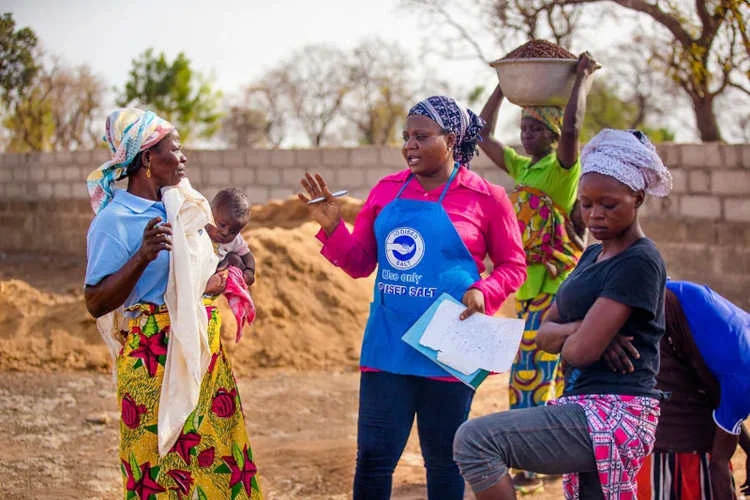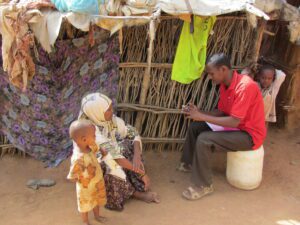Women’s empowerment programs have the power to change the very fabric of society. They breathe life into communities, giving women the voice, agency, and dignity they deserve. But how do we know if these programs are working? How can we be sure they are creating the impact they promise? The answer lies in M&E evaluation—a tool as essential as the programs themselves.
M&E evaluation is the lifeblood of monitoring and assessing women’s empowerment efforts. It captures the successes, uncovers the gaps, and reveals the stories that numbers alone cannot tell. Yet, it’s not just about tracking progress. It’s about seeing beyond the surface, understanding the lived experiences of women, and measuring shifts in power, freedom, and self-worth. With a gender-responsive M&E evaluation, we can grasp the true essence of transformation.
Why Women’s Empowerment Programs Matter
Women’s empowerment is not just a noble cause—it’s a global imperative. Across the world, women face entrenched inequalities that limit their potential. Programs aimed at lifting women from the shackles of oppression are key to achieving gender equality. But the question remains: How do we know these efforts are truly working?
Through M&E evaluation, we don’t just count participation or income changes. We measure deep, systemic shifts: how women are moving from the margins to the center, how their voices are being heard in spaces once dominated by men, and how their economic contributions are transforming communities. Women’s empowerment programs are not just for women; they uplift entire societies by breaking cycles of poverty and exclusion.
The Magic of M&E Evaluation in Empowerment
M&E evaluation—Monitoring and Evaluation—is like an artist’s brush, painting a clear picture of what these programs are accomplishing. It’s more than just numbers on a page; it’s the emotional journey, the before and after of women’s lives. It tells us if they are gaining financial independence, if they are stepping into decision-making roles, and if they feel safer and more valued in their communities.
But a gender-responsive M&E evaluation is particularly special. It delves into the nuances of women’s experiences, capturing the intangible shifts in confidence, autonomy, and status. It ensures that the very soul of the program—its focus on gender equity—is not lost.
In Uganda, for example, programs like those offered by QDIC have harnessed the power of M&E evaluation to not only track progress but transform lives. By using gender-responsive M&E evaluation, they ensure that women’s unique experiences are at the forefront of program assessments.
The Principles of a Gender-Responsive M&E Evaluation
What makes an M&E system truly gender-responsive? At its core, it must be inclusive, participatory, and sensitive to the cultural and social dynamics that shape women’s lives.
Inclusivity and Sensitivity
A gender-responsive M&E evaluation ensures that the data collected speaks to women’s realities. It includes voices that have long been silenced—women from rural areas, marginalized communities, or those facing multiple layers of discrimination. Their experiences and stories are as important as any statistic.
Participation and Power
Women must be active participants in the M&E process. This is not just about gathering data on them, but with them. A participatory approach allows women to share their perspectives, voice their concerns, and highlight the impact of the programs on their daily lives. They become the storytellers in their own empowerment journey.
Ethical Considerations
Ethics are paramount in M&E evaluation, especially when dealing with sensitive issues like gender-based violence or financial dependence. Women must feel safe, respected, and supported throughout the process. Confidentiality and consent are not just formalities—they are the backbone of ethical M&E practices.
Steps in Creating a Gender-Responsive M&E Evaluation Framework
When designing a gender-responsive M&E evaluation, clarity is key. You start by setting objectives that align with the overarching goal of gender equity. What do you want to achieve? Economic empowerment? Social liberation? Political inclusion? Whatever the goal, the framework must reflect the nuances of gender dynamics.
Selecting the Right Indicators
Choosing gender-sensitive indicators is essential. These indicators should go beyond traditional metrics to measure changes in confidence, decision-making power, and societal attitudes. For example, tracking not just employment rates but also how women use their income, or assessing not just education levels but whether women feel empowered to participate in public life.
Collecting and Analyzing Data
Both qualitative and quantitative data are crucial. Surveys, focus groups, and personal interviews are effective tools. But the key is in the analysis—viewing the data through a gender lens. How do the results differ for men and women? Are there unexpected barriers or hidden successes?
In every step, the M&E evaluation framework should be adaptable. Programs must be willing to evolve as they uncover new insights. And the insights don’t just sit in reports—they should lead to action, program tweaks, and shifts in focus to better serve women.
Key Indicators to Measure Empowerment
Through the lens of M&E evaluation, women’s empowerment becomes something we can measure and enhance. Some indicators that guide this process include:
- Economic Empowerment: Employment rates, income levels, access to credit, and business ownership.
- Social Empowerment: Participation in household decisions, social mobility, and leadership in the community.
- Health and Education: Access to healthcare, literacy rates, and educational attainment.
- Political Empowerment: Involvement in governance, voting participation, and holding public office.
Economic Opportunities: Measuring Change
A significant pillar of empowerment is financial independence. Through M&E evaluation, we can track women’s access to employment, entrepreneurial opportunities, and financial resources. Have they gained more control over their income? Are they starting businesses or becoming key economic players in their communities?
An example can be found in microfinance programs that provide women with access to credit. Through M&E evaluation, we see the tangible results: women lifting themselves out of poverty, investing in their children’s education, and contributing to the local economy. It’s not just numbers; it’s the blossoming of potential.
The Role of Women in Decision-Making
Empowerment means influence—both in the home and in the world. Are women’s voices being heard in family decisions? Are they stepping into leadership roles in their communities? M&E evaluation measures these shifts, highlighting how empowerment programs encourage women to move from passive roles to active decision-makers.
Through gender-responsive M&E frameworks, we can see how social norms shift and how gender dynamics change over time. The transformation is slow but profound, as women begin to reshape the conversations around them.
Challenges in M&E Evaluation
Every rose has its thorns, and so it is with M&E evaluation. Cultural resistance, societal taboos, and limited resources can make it difficult to capture the full scope of women’s empowerment. Measuring intangible outcomes like confidence, self-esteem, or changing mindsets is never easy, yet these are the very things that define true empowerment.
But the challenges don’t stop at data collection. The political will to act on the findings, the resources to implement recommended changes, and the community’s readiness to embrace new norms are equally critical. External partners like the World Bank and UN Women offer invaluable guidance and support in overcoming these obstacles, ensuring that programs are not just impactful but sustainable.
How M&E Evaluation Transforms Programs
When M&E findings are fed back into the system, the results are transformative. A good M&E evaluation is a tool for learning and adaptation. If something isn’t working, the data provides a roadmap for change. If something is succeeding, it offers a blueprint for scaling up.
Whether it’s increasing women’s participation in governance, improving access to education, or reducing instances of gender-based violence, M&E evaluation offers clear insight into how programs can continuously evolve. And through this continuous feedback loop, empowerment becomes not just a possibility, but a reality.
Conclusion
The journey toward women’s empowerment is long, winding, and often fraught with challenges. But with a gender-responsive M&E evaluation in hand, we have the compass to guide us. It’s not enough to implement programs; we must measure their impact, reflect on their outcomes, and commit to doing better.
M&E evaluation allows us to capture the stories of women who are stepping into their power, breaking free from the past, and creating new futures. It’s more than a tool—it’s a promise that we will not stop until every woman is free to choose her own path.






